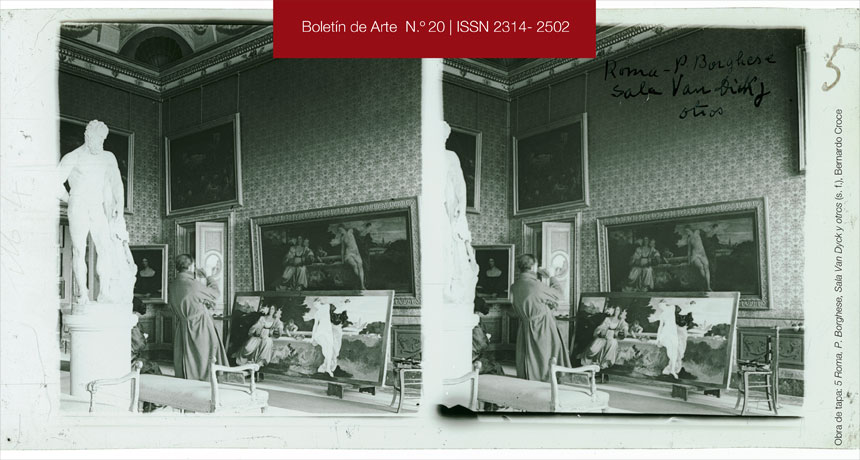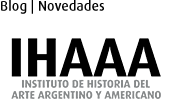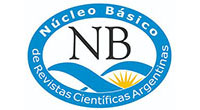Aurora San Cristóval
A Litographer in XIX Century´s Peru
DOI:
https://doi.org/10.24215/23142502e020Keywords:
Lithography, Peru, xix century, woman artistAbstract
In the last quarter of the 19th century, illustrated magazines were one of the most privileged sources to learn about Peru and foreign countries. Numerous lithographs were made public through these pages. Among these collaborators, one artist’s name stands out, Aurora San Cristoval (1878-1955). Aurora did not improvise, she was guided by her father, the renowned lithographer Evaristo San Cristoval. Just as it was pointed out by Linda Nochlin (2007) in her pioneer article about female artists, the art shared between father and daughter is one of the ways in which women were able to join an artistic field dominated by men; for the nineteenth-century’s Peruvian art history, this is a paradigmatic case. This article covers characteristics in the artist’s work and reassesses her task as the only active lithographer in Lima by the end of the 19th century.Downloads
References
Cabello, M. [1875] (2017). Necesidad de una industria para la mujer. En I. Pinto (Comp.), Mercedes Cabello de Carbonera. Artículos periodísticos y ensayos (pp. 63- 66). Lima, Perú: Fondo Editorial del Congreso del Perú.
Diego, E. de. (1987). La mujer y la pintura del xix español. Madrid, España: Ediciones Cátedra. Defunciones. (18 de mayo de 1955). El Comercio, p. 8.
Denegri, F. (2004). El abanico y la cigarrera. La primera generación de mujeres ilustradas en el Perú. Lima, Perú: Instituto de Estudios Peruanos.
Dibujo. (31 de mayo de 1892). El Comercio, p. 3.
Gabinete. (4 de agosto de 1848). El Comercio, p. 1.
García y García, E. (1924). La mujer peruana a través de los siglos: serie historiada de estudios y observaciones. Lima, Perú: Imprenta Americana.
Gamarra, A. (1 de setiembre de 1893). Grabados. El Perú Artístico, (5), 56.
Gamarra, A. (1 de marzo de 1894). Grabados. El Perú Artístico, (5), 195.
La fiesta del arte. (9 de mayo de 1891). El Perú Ilustrado, (209), 2086.
La Ilustración Americana. (3 de febrero de 1891). El Comercio, p. 4.
Leonardini, N. (1998). Los italianos y su influencia en la cultura artística peruana en el siglo xix. México (Tesis de doctorado). Facultad de Filosofía y Letras de la Universidad Nacional Autónoma de México, Ciudad de México, México.
Matto de Turner, C. (15 de febrero de 1890). Nuestros Grabados. El Perú Ilustrado, (145), 1442.
Nochlin, L. [1971] (2007) ¿Por qué no han existido grandes artistas mujeres? En K. Cordero e I. Sáenz. (Comps.), Critica feminista en la teoría e historia del arte (pp. 17-43). Recuperado de https://sentipensaresfem.wordpress.com/2016/09/10/cftha/
Nuestros Grabados. (22 de agosto de 1891). El Perú Ilustrado, (224), 4051.
Pachas, S. (2008). Las artistas plásticas de Lima (1891-1918). Lima, Perú: Seminario de Historia Rural Andina, Universidad Nacional Mayor de San Marcos.
Pachas, S. (2009). Evaristo San Cristóval. Visión gráfica de una época. Lima, Perú: Seminario de Historia Rural Andina, Universidad Nacional Mayor de San Marcos.
Rivero, M. E. y Tschudi, J. (1851). Antigüedades peruanas. Viena, Austria: L. Müller.
San Cristóval, A. (15 de febrero de 1890). Perú. Muralla de Sacsayhuaman en el Cusco [Litografía]. El Perú Ilustrado (145), 1442.
San Cristóval, A. (1892). Ecce Homo [Litografía]. La Exposición de Lima. Revista Ilustrada, (s. n.), s. p.
San Cristóval, A. (1 de setiembre de 1893). La vendedora de frutas [Litografía]. El Perú Artístico, (5), 52.
San Cristóval, A. (15 de setiembre de 1893). En una sastrería [Litografía]. El Perú Artístico, (6), 71.
San Cristóval, A. (1 de julio de 1894). Retrato de Sadi Carnot [Litografía]. El Perú Artístico, (25).
San Cristóval, E. (1948). Centenario de don Evaristo San Cristóval (1848-1948). Lima, Perú: Compañía de Impresiones y Publicidad.
Sagástegui, C. (2003). La historieta peruana 1. Los primeros 80 años 1887 - 1967. Lima, Perú: Instituto Cultural Peruano Norteamericano.
Schor, M. (2007). Linaje paterno. En K. Cordero e I. Sáenz (Comps.), Critica feminista en la teoría e historia del arte (pp. 111-129). Recuperado de https://sentipensaresfem.wordpress.com/2016/09/10/cftha/
Downloads
Published
How to Cite
Issue
Section
License
According to these terms, the material can be copied and redistributed by any means or in any format as long as a) the author and original source of the publication are quoted (magazine and URL of the work), access to the license is provided and whether changes have been made is mentioned; and b) the material is not used for commercial purposes.
The cession of non-exclusive rights means that after the publication (post print) in Boletín de Arte the authors can publish their work in any language, means and format; in such cases it must be mentioned that the material was originally published in this magazine.
Such cession also means the authorization of the authors for the work to be collected by SEDICI, the institutional archive of the National University of La Plata, and to be spread in the databases that the editorial team considers appropriate to increase the visibility of the publication and its authors.
Moreover, the magazine encourages the authors to deposit their productions in other institutional and thematic archives under the principle that offering the society the scientific and academic production without any restrictions contributes to a greater exchange of the global knowledge.
































